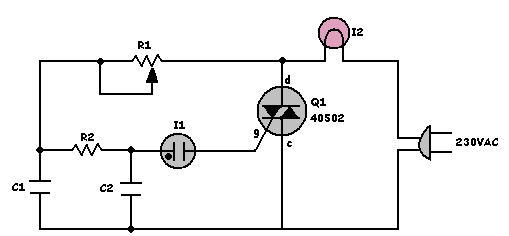In an older textbook it states that a lamp des not glow until about 50 percent of rated voltage, the controls are arranged to start functioning at 50 or 60 volts.
How are the controls changed, because it is suppose to differ from a universal motor speed controller, but both circuits look the same.
How are the controls changed, because it is suppose to differ from a universal motor speed controller, but both circuits look the same.

